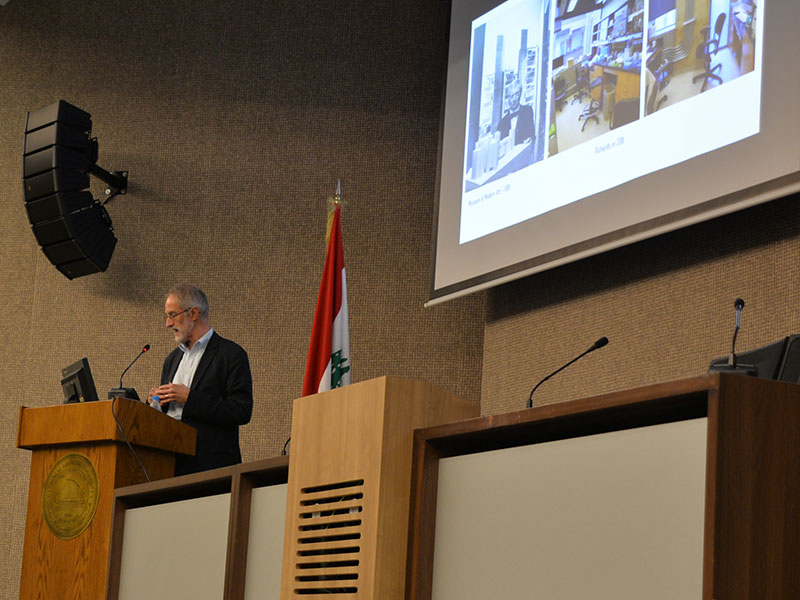Restoring Modern Architecture
Traveling from the United States to speak at LAU’s Byblos and Beirut campuses, David Fixler offered a fascinating insight into the world of architectural restoration.
David Fixler has been in practice since 1980, and has worked on a number of 20th century masterpieces including Le Corbusier’s UN headquarters in New York, Louis Kahn’s Richards Medical labs at the University of Pennsylvania and a number of Alvar Alto’s buildings.
Although at first glance restoration work would appear to be more limiting than traditional design work, Fixler demonstrated the numerous opportunities for creativity and the complex design work actually involved, allowing the building to continue its life well into the coming years. Restoring a building offers an opportunity to improve on the original design and to develop a layout that would be more suitable to its current use, as was the case for the UN headquarters in New York. This aspect is particularly pertinent in the age of sustainability and the growing need for adaptive reuse projects especially within urban contexts.
The ensuing discussion between Fixler and the students and faculty which followed centered around the issues of sustainability, renewable energies and adaptive reuse, a major concern for this new generation of architects. The point was made that in “much of the buildings from the 1950’s and 60’s you find incredibly naive details” which although difficult to update whilst maintaining the aesthetics and design intent of the original architecture, ultimately completely transform the quality of the building in terms of performance. Students were “introduced to some really specific details with the way steel was bended for example” and “the way they were treated it in order to be more sustainable”.
Despite his passion for this meticulous work, Fixler spoke of the difficulties in this field to garner public support, especially when working with public money, and the importance of preserving modern architecture for future generations. He explained that the trick was in “being able to create good stories about modern buildings to gain public support” and to help to save irreplaceable architectural treasures.
The concept of architectural conservation and restoration is particularly pertinent in the context of Beirut, which is undergoing a depletion of its architectural heritage, both of the Nineteenth century and the Twentieth century, in the absence of any official conservation plan.
